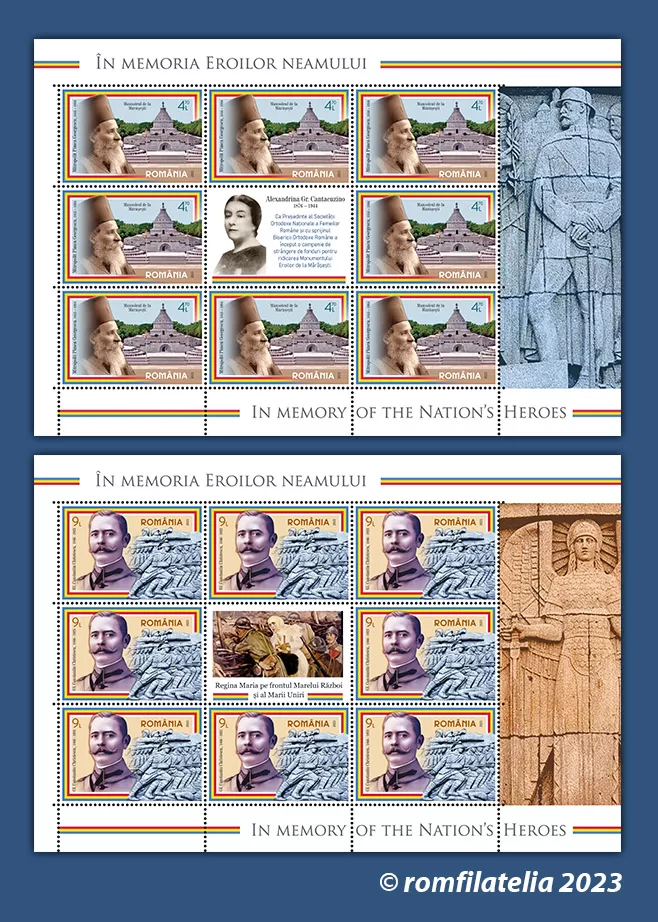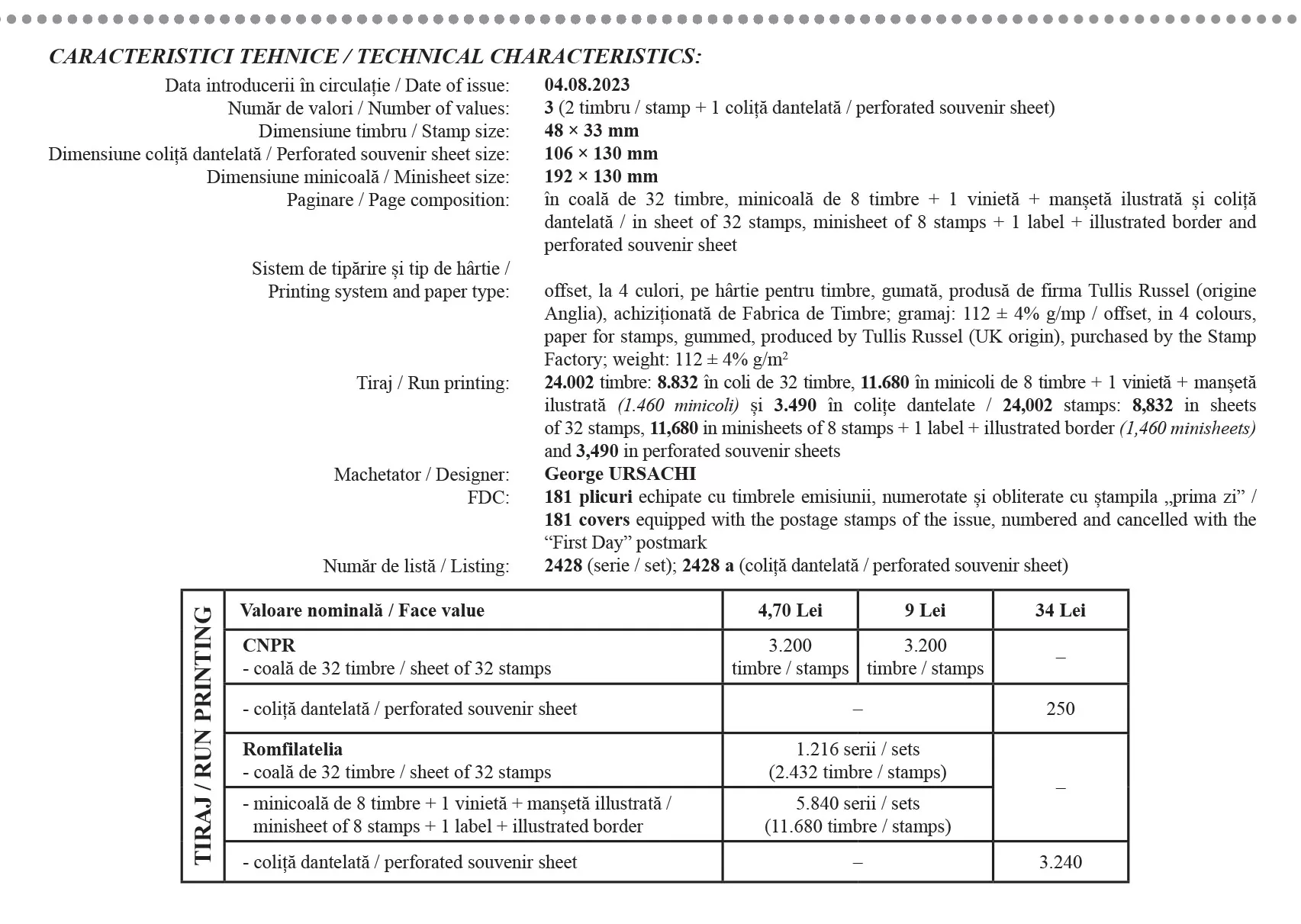 To honour the heroes fallen in the battles of Moldova in 1917, Romfilatelia has created an anniversary issue of postage stamps dedicated to the Centenary of the Mărășești Mausoleum, entitled In Memory of the Nation’s Heroes.
To honour the heroes fallen in the battles of Moldova in 1917, Romfilatelia has created an anniversary issue of postage stamps dedicated to the Centenary of the Mărășești Mausoleum, entitled In Memory of the Nation’s Heroes.
The issue, consisting of 2 postage stamps, 1 perforated souvenir sheet and 1 First Day Cover, will be introduced into circulation on Friday, August 4th, 2023.
The first postage stamp, with the face value of Lei 4.70, depicts the image of the Mausoleum of the Heroes of Mărășești, together with the portrait of Pimen Georgescu, former Metropolitan of Moldavia between 1909-1934, one of the promoters of the idea for the construction of the mausoleum.
The Mausoleum of the Heroes of Mărășești is the first great national project carried out by the Romanian society after the unification of all the historical provinces on December 1st, 1918. In 1919, at the Congress of the National Orthodox Society of Romanian Women, the Metropolitan proposed the erection of a Church of the Nation, on the site of the battles of Mărășești, as a shrine where the war widows, war orphans and the Romanian society would honour the memory of those who fell in the battles of the World War I.
The Metropolitan’s proposal was taken up by the National Orthodox Society of Romanian Women, whose president since 1918 was ALEXANDRINA GR. CANTACUZINO. With the support of the Romanian Orthodox Church, a fund-raising campaign was carried out through parishes throughout the country, in all Romanian provinces, including those that returned to the Kingdom of Romania in 1918: Transylvania, Bessarabia and Bucovina. The Greek-Catholic Church of Transylvania also participated in this project, which considered the idea of building a Church of the Nation an identity project, beyond confessional differences. The monument would not have been possible without the support of the Ministry of War and the Society “Tombs of the Heroes Fallen in the War”, a society founded in the first year after the war, under the patronage of Queen Marie and Metropolitan Primate Miron Cristea, the future Patriarch.
On May 14th, 1923, the ceremony of the designation of the Unknown Soldier took place at Mărășești, and on August 6th, 1923, on the feast of the Transfiguration, on the land donated by George Ulise Negropontes, in front of the local train station, the foundation stone of the Church of the People of Mărășești was laid, in the presence of Metropolitan Pimen Georgescu and thousands of Christians who came in procession by carriage and train from the most distant villages. Thus, began the construction of the most important Romanian memorial dedicated to the heroes of the War for the Reunification of the Nation. The following year, on September 27th, 1924, the crypt in the Mausoleum was consecrated and the entire edifice was completed in 1938.
The second postage stamp, with the face value of Lei 9, shows the portrait of General Constantin Christescu, one of the most important military strategists of the First World War, the one who thought up the plans for the famous Battle of Mărășești in the summer of 1917.
On the souvenir sheet of the issue, having the stamp with the face value of Lei 34, the following elements are depicted in the graphic composition: in the upper part – detail of the dome of the Mausoleum, with the cross, and on the sides, the medal (obverse and reverse) dedicated to the Heroes of the Nation and the Mausoleum, medal issued during the period of Royalty.
The centenary of the Mausoleum of the Heroes of Mărășești is a moment of gratitude to those who, in a war-torn Romania, managed to build one of the most grandiose war memorials in Europe.
Romfilatelia thanks the representatives of the Vrancea Museum and the Vrancea County Council for their collaboration in the development of this issue of postage stamps.



